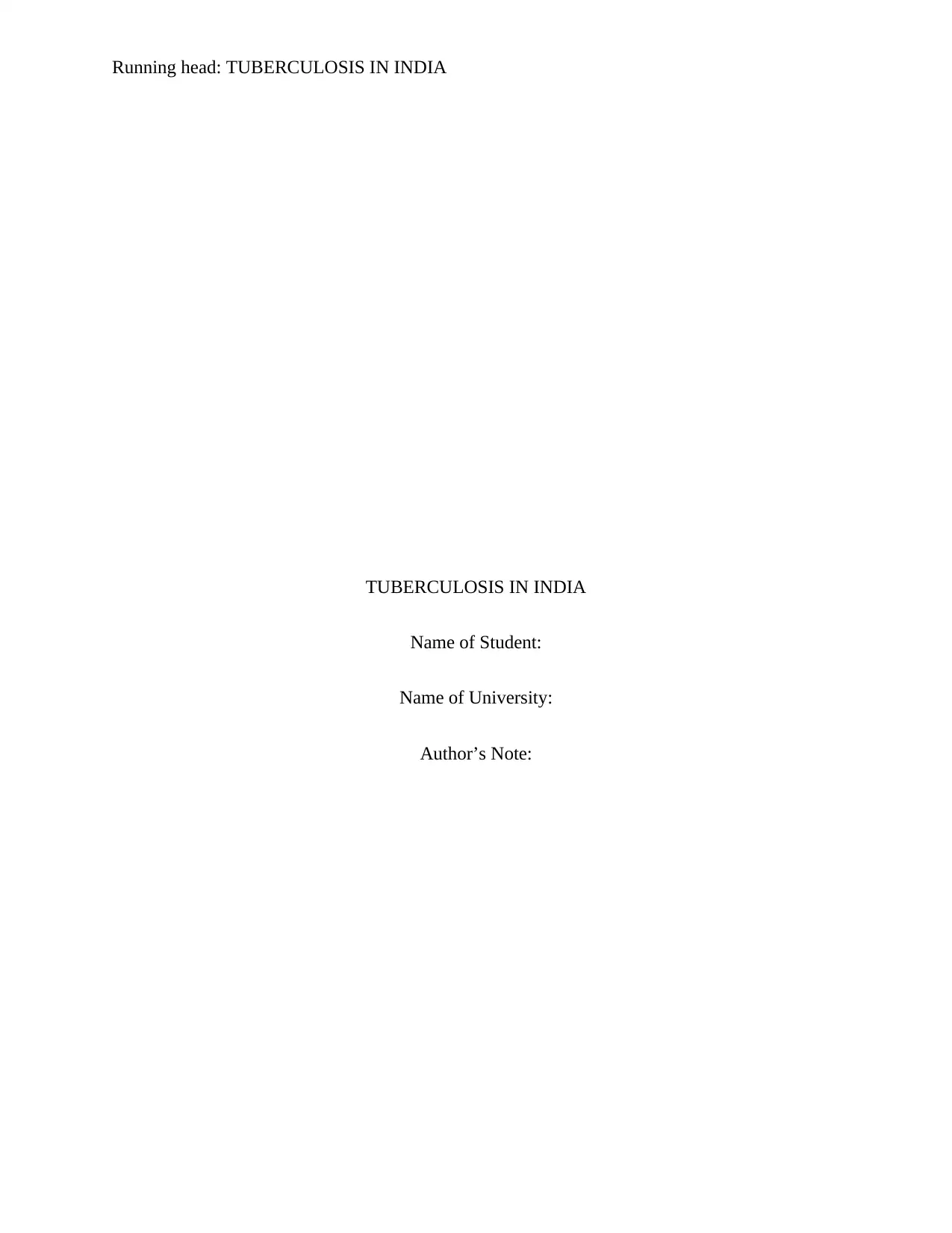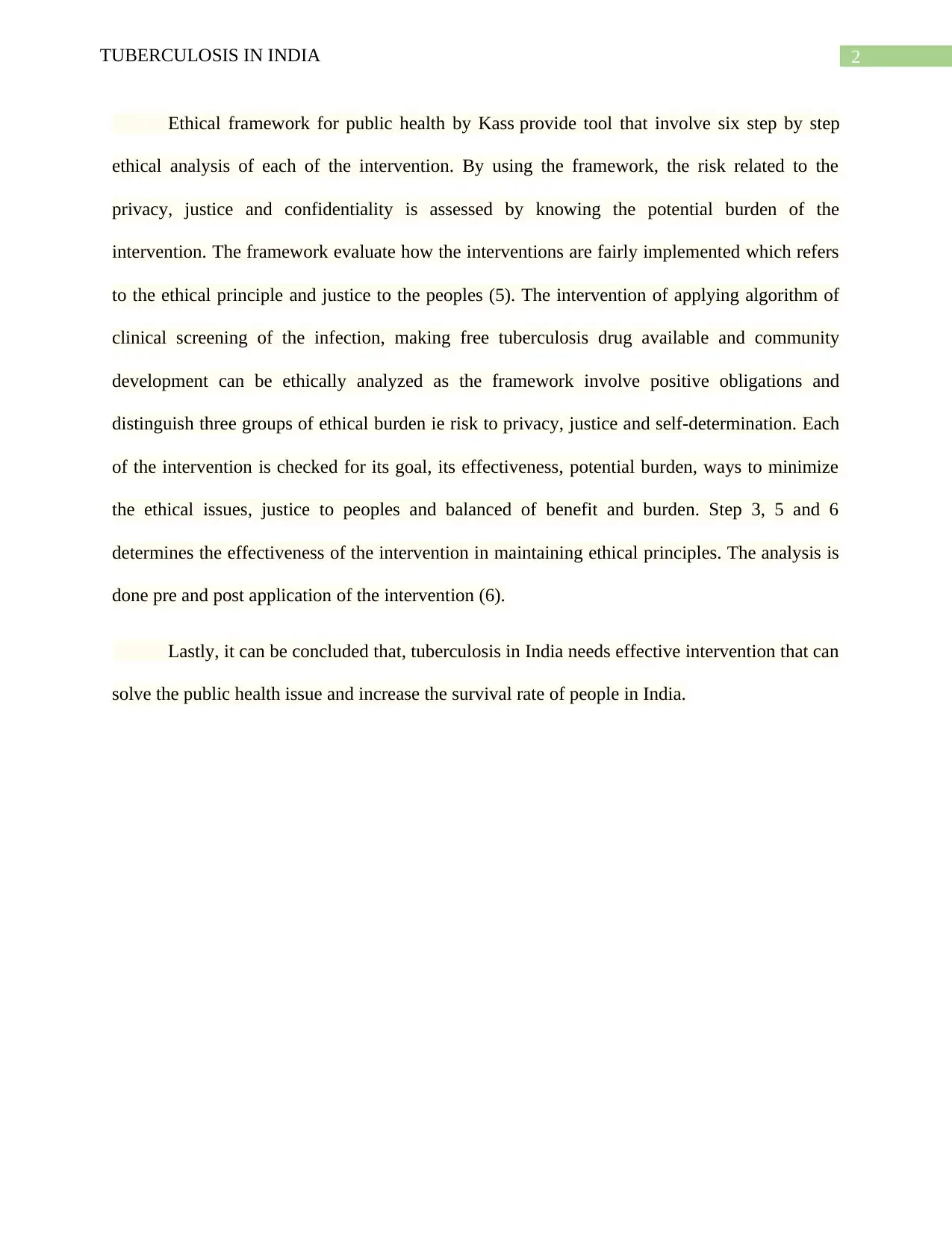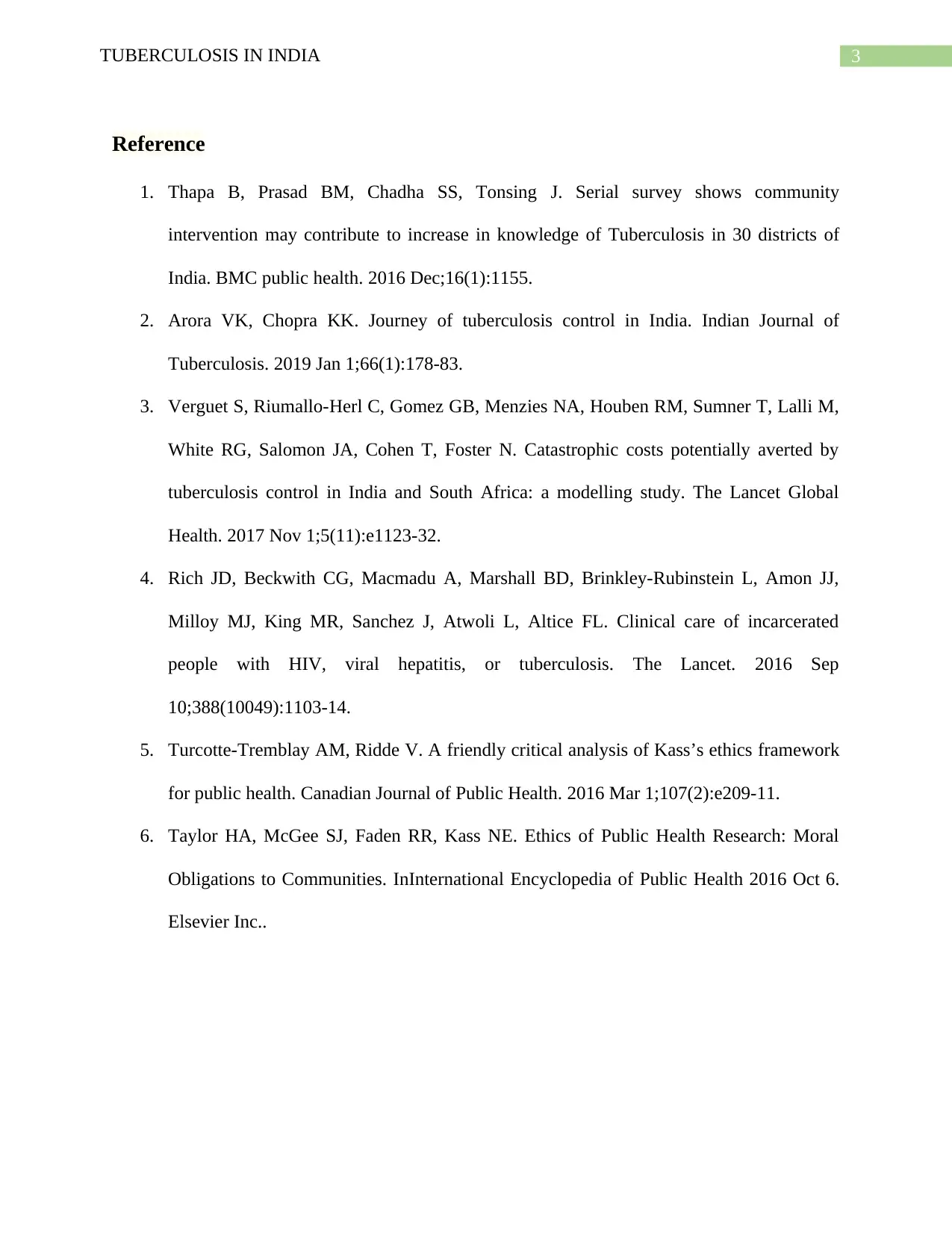2019 S1 HSYP801: Tuberculosis in India - Public Health Report
VerifiedAdded on 2023/01/20
|4
|859
|66
Report
AI Summary
This report provides an overview of the tuberculosis situation in India, highlighting the country's significant disease burden. It details the interventions implemented by the Indian government, including the use of clinical algorithms for screening, the provision of free drugs and diagnostic tests, and community development initiatives. The report emphasizes the importance of ethical considerations, particularly the application of Kass's ethical framework to assess the interventions' impact on privacy, justice, and self-determination. The analysis includes pre- and post-intervention evaluations to determine effectiveness in maintaining ethical principles. The report concludes that effective interventions are crucial to address the public health issue and improve survival rates in India, referencing key studies and the national strategic plan.
1 out of 4









![[object Object]](/_next/static/media/star-bottom.7253800d.svg)